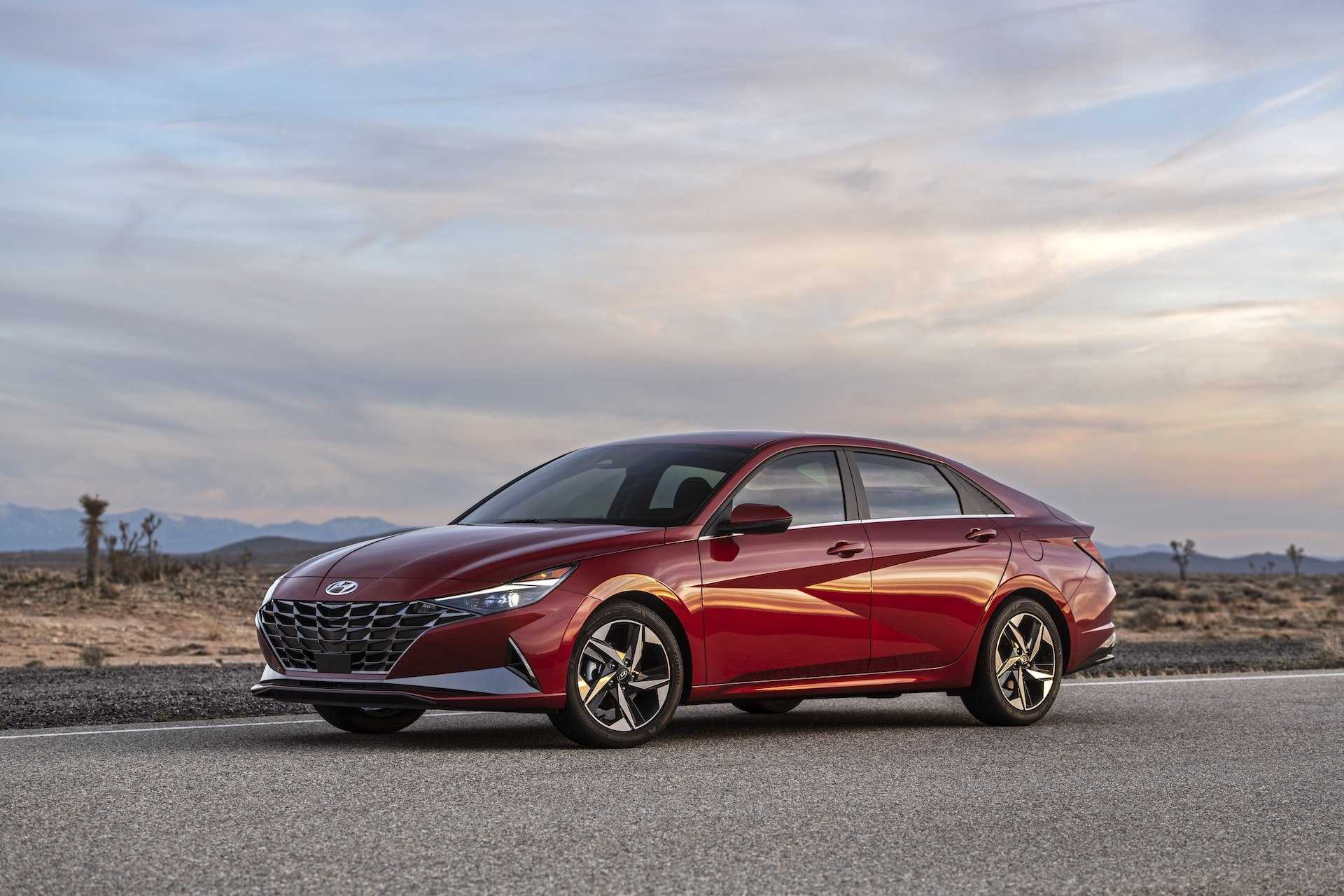2023 Hyundai Elantra Intelligent Variable Transmission
The Intelligent Variable Transmission (IVT) in the 2023 Hyundai Elantra is a big step forward in the world of car technology. At the heart of this cutting-edge technology is a driving experience that is both smooth and dynamic, redefining what efficiency and speed mean. The IVT, which is a type of continuously variable transmission (CVT), improves the Elantra’s driving dynamics by improving engine performance through a continuous range of gear ratios. This makes for very smooth acceleration, better gas mileage, and a refined driving experience that appeals to both car fans and people who just want to be comfortable on the road. Using a gear and belt system, the IVT changes the ratios automatically to match how the car is being driven. This lets the Elantra run at its most efficient RPM range. The end result is a driving experience that combines quick power with low fuel use. With a focus on making driving more comfortable and familiar, the IVT mimics traditional gear shifts in a way that feels more natural to the driver. The Intelligent Variable Transmission in the 2023 Hyundai Elantra shows how committed Hyundai is to making cars that are both technologically advanced and fun to drive. By improving speed, efficiency, and driving dynamics, the IVT is one of the most important parts of making your trips exciting and memorable.
2023 Hyundai Elantra Specs, Price, Features, Mileage (brochure)
Before Driving
Before Entering the Vehicle
- Be sure all windows, outside mirror(s), and outside lights are clean and unobstructed.
- Remove frost, snow, or ice.
Visually check the tires for uneven wear and damage. - Check under the vehicle for any sign of leaks.
- Be sure there are no obstacles behind you if you intend to back up.
Before Starting
- Make sure the hood, the trunk, and the doors are securely closed and locked.
- Adjust the position of the seat and steering wheel.
- Adjust the inside and side view mirrors.
- Verify all the lights work.
- Fasten your seatbelt. Check that all passengers have fastened their seatbelts.
- Check the gauges and indicators in the instrument panel and the messages on the instrument display when the ignition switch is in the ON position.
- Check that any items you are carrying are stored properly or fastened down securely.
WARNING
To reduce the risk of SERIOUS INJURY or DEATH, take the following precautions:
- ALWAYS wear your seat belt. All passengers must be properly belted whenever the vehicle is moving. For more information, refer to “Seat Belts” in chapter 3.
- Always drive defensively. Assume other drivers or pedestrians may be careless and make mistakes.
- Stay focused on the task of driving. Driver distraction can cause accidents.
- Leave plenty of space between you and the vehicle in front of you.
WARNING
NEVER drink alcohol or take drugs and drive.
Drinking alcohol or taking drugs and driving is dangerous and may result in an accident and SERIOUS INJURY or DEATH.
Drunk driving is the number one contributor to the highway death toll each year. Even a small amount of alcohol will affect your reflexes, perceptions and judgment. Just
one drink can reduce your ability to respond to changing conditions and emergencies and your reaction time gets worse with each additional drink.
Driving while under the influence
of drugs is as dangerous as or more dangerous than driving under the influence of alcohol.
You are much more likely to have a serious accident if you drink or take drugs and drive. If you are drinking or taking drugs, don’t drive. Do not ride with a driver who has been drinking or taking drugs. Choose a designated driver or call a taxi.
IGNITION SWITCH
Key Ignition Switch (if equipped)
WARNING
To reduce the risk of SERIOUS INJURY or DEATH, take the following precautions:
- NEVER allow children or any person who is unfamiliar with the vehicle to touch the ignition switch or related parts. Unexpected and sudden vehicle movement can occur.
- NEVER reach through the steering wheel for the ignition switch, or any other control, while the vehicle is in motion. The presence of your hand or arm in this area may cause a loss of vehicle control resulting in an accident.
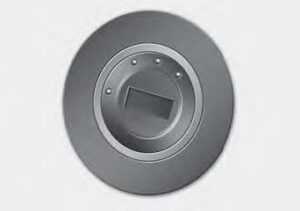
Whenever the front door is opened, the ignition switch will illuminate, provided the ignition switch is not in the ON position. The light will go off immediately when the ignition switch is turned on or go off after about 30 seconds when the door is closed. (if equipped)
WARNING
NEVER turn the ignition switch to the LOCK or ACC position while the vehicle is in motion except in an emergency. This will result in the engine turning off and loss of power assist for the steering and brake systems. This may lead to loss of directional control and braking function, which could cause an accident.
Before leaving the driver’s seat, always make sure the shift button is in P (Park) position, apply the parking brake, and turn ignition switch to the LOCK position.
Unexpected vehicle movement may occur if these precautions are not followed.
Key ignition switch positions
| Switch Position | Action | Notice |
| LOCK | To turn the ignition switch to the LOCK position, put the key in at the ACC position and turn the key towards the LOCK position. The ignition key can be removed in the LOCK position. |
|
| ACC | Electrical accessories are usable. The steering wheel unlocks. | |
| ON | This is the normal key position when the engine has started. All features and accessories are usable.} The warning lights can be checked when you turn the ignition switch Nfrom ACC to ON. |
Do not leave the ignition switch in the ON position when the engine is not running in order to prevent the battery from discharging. |
| START | To start the engine, turn the ignition switch to the START position. The switch returns to the ON position when you let go of the key. | The engine will crank until you release the key. |
Starting the engine
WARNING
Always wear appropriate shoes when operating your vehicle.
Unsuitable shoes, such as high heels, ski boots, sandals, flip-flops, etc., may interfere with your ability to use the brake and accelerator pedals.
Vehicle with manual transmission:
- Make sure the parking brake is applied.
- Make sure the shift lever is in neutral.
- Depress the clutch and brake pedals.
- Turn the ignition switch to the START position. Hold the key (maximum of 10 seconds) until the engine starts and release it.
Information
Depress the brake pedal and clutch pedal until the engine starts.
Vehicle with intelligent variable transmission:
- Make sure the parking brake is applied.
- Make sure the shift lever is in P (Park).
- Depress the brake pedal.
- Turn the ignition switch to the START position. Hold the key (maximum of 10 seconds) until the engine starts and release it.
Information
- It is best to maintain a moderate engine speed until the vehicle engine comes up to normal operating temperature. Avoid harsh or abrupt acceleration or deceleration while the engine is still cold.
- Whether the engine is cold or warm, always start the vehicle with your foot on the brake pedal. Do not depress the accelerator while starting the vehicle. Do not rev the engine while warming it up.
NOTICE
To prevent damage to the vehicle:
- Do not hold the ignition key in the START position for more than 10 seconds. Wait 5 to 10 seconds before trying again.
- Do not push or tow your vehicle to start the engine.
Turning off the engine
- Stop the vehicle and depress the brake pedal fully.
- Shift the gear to P (Park).
- Turn the ignition switch to the off position and apply the parking brake.
Engine Start/Stop Button (if equipped)
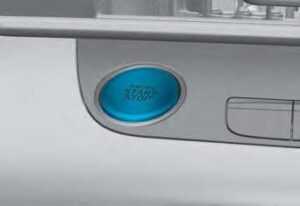
Whenever the front door is opened, the Engine Start/Stop button will illuminate and will go off 30 seconds after the door is closed. (if equipped)
WARNING
To reduce risk of serious injury or death, NEVER allow children or any person who is unfamiliar with the vehicle to touch the Engine Start/Stop button or related parts. Unexpected and sudden vehicle movement can occur.
WARNING
To turn the engine off in an emergency:
Press and hold the Engine Start/Stop button for more than two seconds OR rapidly press and release the Engine Start/Stop button three times (within three seconds).
If the vehicle is still moving, you can restart the engine without depressing the brake pedal by pressing the Engine Start/Stop button with the shift button in the N (Neutral) position.
WARNING
- NEVER press the Engine Start/Stop button while the vehicle is in motion except in an emergency. This will result in the engine turning off and loss of power assist for the steering and brake systems.
This may lead to loss of directional control and braking function, which could cause an accident. - Before leaving the driver’s seat, always make sure the shift button is in the P (Park) position, set the parking brake, press the Engine Start/Stop button to the OFF position, and take the Smart Key with you. Unexpected vehicle movement may occur if these precautions are not followed.
- NEVER reach through the steering wheel for the Engine Start/Stop button or any other control while the vehicle is in motion. The presence of your hand or arm in this area may cause a loss of vehicle control resulting in an accident.
Engine Stop/Start button positions
| Button Position | Action | Notice |
|
OFF |
To turn off the engine, press the Engine Start/Stop button with shift button in P (Park). When you press the Engine Start/ Stop button without the shift button in P (Park), the Engine Start/ Stop button does not turn to the OFF position, but turns to the ACC position. | |
| ACC | Press the Engine Start/Stop button when the button is in the OFF position without depressing the brake pedal. Electrical accessories are usable. | If you leave the Engine Start/Stop button in the ACC position for more than one hour, the battery power will turn off automatically to prevent the battery from discharging. |
|
ON |
Press the Engine Start/Stop button while it is in the ACC position without depressing the brake pedal. The warning lights can be checked before the engine is started. | Do not leave the Engine Start/Stop button in the ON position when the engine is not running to prevent the battery from discharging. |
| START | To start the engine, depress the brake pedal and press the Engine Start/Stop button with the shift button in the P (Park) or in the N (Neutral) position. For your safety, start the engine with the shift button in the P (Park) position. |
If you press the Engine Start/Stop button without depressing the brake pedal, the engine does not start and the Engine Start/Stop button changes as follows: 2)) Ɵ $&& Ɵ 21 Ɵ 2)) RU $&& However, the engine may start if you depress the brake pedal within 0.5 second after pressing the Engine Start/Stop button from the OFF position. |
Starting the engine
WARNING
- Always wear appropriate shoes when operating your vehicle.
Unsuitable shoes, such as high heels, ski boots, sandals, flip-flops, etc., may interfere with your ability to use the brake and accelerator pedals. - Do not start the vehicle with the accelerator pedal depressed. The vehicle can move and lead to an accident.
- Wait until the engine rpm is normal. The vehicle may suddenly move if the brake pedal is released when the rpm is high.
Information
- The engine will start by pressing the Engine Start/Stop button, only when the smart key is in the vehicle.
- Even if the smart key is in the vehicle, if it is far away from the driver, the engine may not start.
- When the Engine Start/Stop button is in the ACC or ON position, if any door is open, the system checks for the smart key. If the smart key is not in the vehicle, the “ ” indicator will blink and the warning “Key not in vehicle” will come on and if all doors are closed, the chime will also sound for about 5 seconds. Keep the smart key in the vehicle when using the ACC position or if the vehicle engine is ON.
Vehicle with manual transmission:
- Always carry the smart key with you.
- Make sure the parking brake is applied.
- Make sure the shift lever is in neutral.
- Depress the clutch and brake pedals.
- Press the Engine Start/Stop button.
Information
Depress the brake pedal and clutch pedal until the engine starts.
Vehicle with intelligent variable transmission:
- Always carry the smart key with you.
- Make sure the parking brake is applied.
- Make sure the shift lever is in P (Park).
- Depress the brake pedal.
- Press the Engine Start/Stop button.
Information
- Do not wait for the engine to warm up while the vehicle remains stationary. Start driving at moderate engine speeds. (Aggressive accelerating and decelerating should be avoided.)
- Always start the vehicle with your foot on the brake pedal. Do not depress the accelerator while starting the vehicle. Do not rev the engine while warming it up.
NOTICE
To prevent damage to the vehicle:
- If the engine stalls while you are in motion, do not attempt to move the shift button to the P (Park) position.
If traffic and road conditions permit, you may put the shift button in the N (Neutral) position while the vehicle is still moving and press the Engine Start/Stop button in an attempt to restart the engine. - Do not push or tow your vehicle to start the engine.
NOTICE
To prevent damage to the vehicle:
When the stop lamp switch fuse is blown, you can’t start the engine normally. Replace the fuse with a new one. If you are not able to replace
the fuse, you can start the engine by pressing and holding the Engine Start/Stop button for 10 seconds with the Engine Start/Stop button in the ACC position.
Do not press the Engine Start/Stop button for more than 10 seconds except when the stop lamp switch fuse is blown.
For your safety always depress the brake pedal before starting the engine.
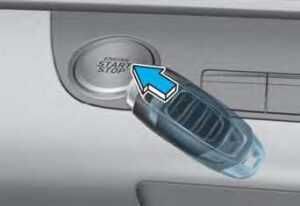
Information
If the smart key battery is weak or the smart key does not work correctly, you can start the engine by pressing the Engine Start/Stop button with the smart key in the direction of the picture above.
Vehicle Auto-Shut Off
If your vehicle is parked and the engine is left on for a long period of time, the engine will turn off automatically to help reduce fuel consumption and prevent accidents caused by carbon dioxide poisoning.
Operating Conditions
Vehicle Auto-Shut Off timer operates when all the following conditions are satisfied:
- Vehicle speed is below 1.8 mph (3 km/h), and the gear is shifted to P (Park)
- The brake pedal and accelerator pedal are not depressed
- The driver’s seat belt is unfastened \
- The passenger seat is empty
- The infotainment system is not being updated
Deactivating Conditions
Vehicle Auto-Shut Off timer turns off when one of the situation occur:
- Vehicle speed is above 1.8 mph (3 km/h)
- The gear is shifted to R (Reverse), D (Drive) or N (Neutral)
- The brake pedal or accelerator pedal is depressed
- The driver’s seat belt is fastened
- A passenger is in the passenger’s seat
System Operation

When all the conditions are satisfied, the Vehicle Auto-Shut Off operates and turns the engine off automatically after 60 minutes.
A timer appears on the instrument cluster 30 minutes before vehicle shut off.
Resetting cluster timer
To reset the cluster timer, do one of following:
- Release the accelerator pedal or brake pedal after Vehicle Auto-Shut Off is complete.
- Press the OK button on the steering wheel while the timer appears on the instrument cluster.
CAUTION
Do not leave a passenger or a pet in the vehicle in hot weather since the air conditioning system turns off when the engine is off.
Manual Transmission

Manual Transmission Operation
The manual transmission has 6 forward gears. The transmission is fully synchronized in all forward gears so shifting to either a higher or a lower gear is easily accomplished.
WARNING
- Before leaving the driver’s seat, always make sure the shift lever is in 1st gear when the vehicle is parked on a uphill and in R (Reverse) on
a downhill, set the parking brake, and place the ignition switch in the LOCK/OFF position. Unexpected vehicle movement may occur if these precautions are not followed. - When parking on an incline, block the wheels to prevent the vehicle from rolling down.
To shift to R (Reverse), make sure the vehicle has completely stopped, and then move the shift lever to neutral before moving into R (Reverse).
When you’ve come to a complete stop and it’s hard to shift into 1st gear or R (Reverse):
- Put the shift lever in neutral and release the clutch pedal.
- Depress the clutch pedal, and then shift into first or R (Reverse) gear.
Information
During cold weather, shifting may be difficult until the transmission lubricant has warmed up.
Using the clutch
The clutch pedal should be depressed all the way before:
- Starting the engine
The engine will not start without depressing the clutch pedal. - Shifting into gear, up shifting to the next higher gear, or down shifting to the next low gear.
When releasing the clutch pedal, release it slowly. The clutch pedal should always be fully released while driving.
NOTICE
To prevent unnecessary wear or damage to the clutch:
- Do not rest your foot on the clutch pedal while driving.
- Do not hold the vehicle with the clutch on an incline, while waiting for the traffic light, etc.
- Always depress the clutch pedal down fully to prevent noise or damage.
- Do not start with the 2nd (second) gear engaged except when you start on a slippery road.
- Do not drive with cargo loaded more than the recommended loading capacity.
- Make sure to depress the clutch pedal until the engine starts completely. If you release the clutch pedal before the engine starts completely, the engine may stop.
Downshifting
Down shift to a lower gear when slowing down in heavy traffic or driving up a steep hill to prevent high engine loads.
Also, downshifting reduces the chance of stalling and helps to reaccelerate the vehicle when you need to increase your speed.
When the vehicle is going downhill, downshifting helps maintain safe speed by providing a load from the engine and results in less wear on the brakes.
NOTICE
To prevent damage to the engine, clutch and transmission:
- When downshifting from 5th gear to 4th gear, be careful not to inadvertently push the shift lever sideways engaging the 2nd gear.
A drastic downshift may cause the engine speed to increase to the point the tachometer will enter the red-zone and may cause engine damage. - Do not downshift more than two gears at a time or downshift the gear when the engine is running at high speed (5,000 RPM or higher). Such downshifting may damage the engine, clutch and the transmission.
Good Driving Practices
- Never take the vehicle out of gear and coast down a hill. This is extremely dangerous.
- Don’t “ride” the brakes. This can cause the brakes and related parts to overheat and malfunction.
- When you are driving down a long hill, slow down and shift to a lower gear. Engine braking will help slow down the vehicle.
- Slow down before shifting to a lower gear. This will help avoid over-revving the engine, which can cause damage.
- Slow down when you encounter cross winds. This gives you much better control of your vehicle.
- Be sure the vehicle is completely stopped before you shift into R
(Reverse) to prevent damage to the transmission. - Exercise extreme caution when driving on a slippery surface. Be especially careful when braking, accelerating or shifting gears. On a slippery surface, an abrupt change in vehicle speed can cause the drive wheels to lose traction and may cause loss of vehicle control resulting in an accident.
WARNING
Do not use the engine brake (shifting from a higher gear to lower gear) rapidly on slippery roads. The vehicle may slip causing an accident.
WARNING
To reduce the risk of SERIOUS INJURY or DEATH:
- ALWAYS wear your seat belt. In a collision, an unbelted occupant is significantly more likely to be seriously injured or killed than a properly belted occupant.
- Avoid high speeds when cornering or turning.
- Do not make quick steering wheel movements, such as sharp lane changes or fast, sharp turns.
- The risk of rollover is greatly increased if you lose control of your vehicle at highway speeds.
- Loss of control often occurs if two or more wheels drop off the roadway and the driver over steers to reenter the roadway.
- In the event your vehicle leaves the roadway, do not steer sharply. Instead, slow down before pulling back into the travel lanes.
- HYUNDAI recommends you follow all posted speed limits.
Intelligent Variable Transmission

- Depress the brake pedal and press the shift button while moving the shift lever.
- Press the shift button while moving the shift lever.
- The shift lever can freely operate.
Intelligent Variable Transmission Operation
The Intelligent Variable Transmission (IVT) automatically shifts depending on speed and accelerate pedal position. The individual speeds are selected automatically, depending on the position of the shift lever.
WARNING
To reduce the risk of serious injury or death:
- ALWAYS check the surrounding areas near your vehicle for people, especially children, before shifting a vehicle into D (Drive) or R (Reverse).
- Before leaving the driver’s seat, always make sure the shift lever
is in the P (Park) position, then set the parking brake, and place the ignition switch in the LOCK/OFF position. Unexpected and sudden vehicle movement can occur if these precautions are not followed. - When using Manual Shift Mode, do not use engine braking (shifting from a high gear to lower gear) rapidly on slippery roads. The vehicle may slip causing an accident.
Transmission ranges
The indicator in the instrument cluster displays the shift lever position when the ignition switch is in the ON position.
P (Park)
Always come to a complete stop before shifting into P (Park). To shift from P (Park), you must depress firmly on the brake pedal and make sure your foot is off the accelerator pedal. If you have done all of the above and still cannot shift the lever out of P (Park), see “Shift-Lock Release” in this chapter.
shift lever must be in P (Park) before turning the engine off.
WARNING
- Shifting into P (Park) while the vehicle is in motion may cause you to lose control of the vehicle.
- After the vehicle has stopped, always make sure the shift lever is in P (Park), apply the parking brake, and turn the engine off.
- When parking on an incline, block the wheels to prevent the vehicle from rolling down.
- Do not use the P (Park) position in place of the parking brake.
- The RPM (revolution per minute) may increase or decrease when performing the Intelligent Variable Transmission (IVT) self-diagnosis.
R (Reverse)
Use this position to drive the vehicle backward.
NOTICE
Always come to a complete stop before shifting into or out of R (Reverse); you may damage the transmission if you shift into R (Reverse) while the vehicle is in motion.
N (Neutral)
The wheels and transmission are not engaged.
Use N (Neutral) if you need to restart a stalled engine, or if it is necessary to stop with the engine ON. Shift into P (Park)
if you need to leave your vehicle for any reason.
Always depress the brake pedal when you are shifting from N (Neutral) to another gear.
WARNING
Do not shift into gear unless your foot is firmly on the brake pedal. Shifting into gear when the engine is running at high speed can cause the vehicle to move very rapidly. You could lose control of the vehicle and hit people or objects.
D (Drive)
This is the normal driving position. The transmission will automatically shift, providing the best fuel economy and power. For extra power when passing another vehicle or driving uphill depress the accelerator pedal further until you feel the transmission downshift to a lower gear.
The DRIVE MODE switch, located on the shift lever console, allows the driver to switch from NORMAL mode to ECO or SPORT mode (if equipped).
For more information, refer to “Drive Mode Integrated Control System” later in this chapter.
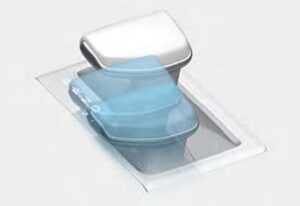
DS mode (Drive Sporty)
- To shift into Ds mode, move the shift lever from D (Drive) to the center of the manual shift mode. The engine and transmission control logic is automatically optimized for sporty driving.
- ]In Ds mode, if you move the shift lever to + (up) or (down), the gear will change to manual shift mode. If the shift lever is moved back into D (Drive), it will change to D (Drive). The vehicle will perform according to the mode selected from drive mode (NORMAL, SPORT, SMART).

Manual shift mode
Whether the vehicle is stationary or in motion, manual shift mode is selected by pushing the shift lever from the D (Drive) position into the manual gate. To return to D (Drive) range operation, push the shift lever back into the main gate.
In manual shift mode, moving the shift lever backwards and forwards will allow you to select the desired range of gears for the current driving conditions.
+ (Up) : Push the lever forward once to
shift up one gear.
– (Down) : Pull the lever backwards once to shift down one gear.
Information
- Only the six forward gears can be selected. To reverse or park the vehicle, move the shift lever to the R (Reverse) or P (Park) position as required.
- Downshifts are made automatically when the vehicle slows down. When the vehicle stops, 1st gear is automatically selected.
- When the engine rpm approaches the
- When the engine rpm approaches the
- If the driver presses the lever to + (Up) or – (Down) position, the transmission may not make the requested gear change if the next gear is outside of the allowable engine rpm range. The driver must execute upshifts in accordance with road conditions, taking care to keep the engine rpms below the red zone.
- When driving on a slippery road, push the shift lever forward into the + (Up) position. This causes the transmission to shift into the 2nd gear which is better for smooth driving on a slippery road. Push the shift lever to the – (Down) side to shift back to the 1st gear.
- When driving in manual shift mode, slow down before shifting to a lower gear. Otherwise, the lower gear may not be engaged if the engine rpms are outside of the allowable range.
Shift-lock system
For your safety, the Intelligent variable transmission has a shift-lock system which prevents shifting the transmission from P (Park) into R (Reverse) unless the brake pedal is depressed.
To shift the transmission from P (Park) into R (Reverse):
- Depress and hold the brake pedal.
- Start the engine or place the ignition switch in the ON position.
- Move the shift lever.
Shift-lock release
If the shift lever cannot be moved from the P (Park) position into R (Reverse) position with the brake pedal depressed, continue depressing the brake, and then do the following:
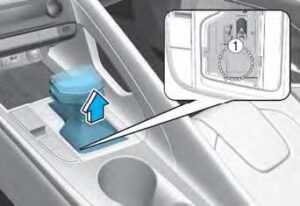
- Place the ignition switch in the LOCK/OFF position.
- Apply the parking brake.
- Carefully remove the shift lever boots.
- Move the shift lever while holding the release button (1) with a tool (for example, flathead screw-driver).
If you need to use the shift-lock release, have the vehicle inspected by an authorized HYUNDAI dealer immediately.
CAUTION
Be careful not to damage the trim beside of the shift lever while removing the shift lever boots.
Ignition key
interlock system (if equipped)
The ignition key cannot be removed unless the shift lever is in the P (Park) position.
Parking
Always come to a complete stop and continue to depress the brake pedal. Move the shift lever into the P (Park) position, apply the parking brake, and place the ignition switch in the LOCK/OFF position. Take the Key with you when exiting the vehicle.
WARNING
- When you stay in the vehicle with the engine running, be careful not to depress the accelerator pedal for a long period of time. The engine or exhaust system may overheat and start a fire.
- The exhaust gas and the exhaust system are very hot. Keep away from the exhaust system components.
- Do not stop or park over flammable materials, such as dry grass, paper or leaves. They may ignite and cause a fire.
Good Driving Practices
- Never move the shift lever from P (Park) or N (Neutral) to any other position with the accelerator pedal depressed.
- Never move the shift lever into P (Park) when the vehicle is in motion.
- Be sure the vehicle is completely stopped before you attempt to shift into R (Reverse) or D (Drive).
- Do not move the shift lever to N (Neutral) when driving. Doing so may result in an accident because of a loss of engine braking and the transmission could be damaged.
- When driving uphill or downhill, always shift to D (Drive) for driving forward or shift to R (Reverse) for driving backwards, and check the gear position indicated on the cluster before driving. Driving in the opposite direction of the selected gear, can lead to a dangerous situation by shutting off the engine and affecting the braking performance.
- Do not drive with your foot resting on the brake pedal. Even light, but consistent pedal pressure can result in the brakes overheating, brake wear and possibly even brake failure.
- Do not hold the vehicle on an incline with the accelerator pedal. This can cause the transmission to overheat. Always use the brake pedal or parking brake.
- Always apply the parking brake when leaving the vehicle. Do not depend on placing the transmission in P (Park) to keep the vehicle from moving.
- Exercise extreme caution when driving on a slippery surface. Be especially careful when braking, accelerating or shifting gears. On a slippery surface, an abrupt change in vehicle speed can cause the drive wheels to lose traction and may cause loss of vehicle control resulting in an accident.
- Optimum vehicle performance and economy is obtained by smoothly depressing and releasing the accelerator.
WARNING
To reduce the risk of SERIOUS INJURY or DEATH:
- ALWAYS wear your seat belt. In a collision, an unbelted occupant is significantly more likely to be seriously injured or killed than a properly belted occupant.
- Avoid high speeds when cornering or
turning. - Do not make quick steering wheel movements, such as sharp lane changes or fast, sharp turns.
- The risk of rollover is greatly increased if you lose control of your vehicle at highway speeds.
- Loss of control often occurs if two or more wheels drop off the roadway and the driver over steers to reenter the roadway.
- In the event your vehicle leaves the roadway, do not steer sharply. Instead, slow down before pulling back into the travel lanes.
- HYUNDAI recommends you follow all posted speed limits.
FAQ
A: The Intelligent Variable Transmission (IVT) is a type of continuously variable transmission (CVT) used in the 2023 Hyundai Elantra.
A: The IVT is a type of CVT that uses a pulley system and a belt to provide a seamless range of gear ratios, resulting in smoother acceleration and improved fuel efficiency compared to traditional automatic transmissions.
A: The IVT offers improved fuel efficiency, smoother acceleration, and seamless gear transitions, enhancing overall driving comfort.
A: Yes, the IVT is designed to simulate traditional gear shifts, creating a more familiar driving experience for those accustomed to automatic transmissions.
A: The IVT’s ability to continuously adjust gear ratios optimizes engine performance, allowing the Elantra to operate at its most efficient RPM range for various driving conditions.
A: While some CVTs allow for simulated gear shifting, the IVT in the Elantra may focus more on automatic and efficient gear ratio adjustments.
A: The Elantra with IVT might offer different driving modes like Normal, Eco, and Sport, which could adjust the transmission’s behavior for different driving preferences.
A: The IVT generally requires regular maintenance similar to traditional automatic transmissions, including fluid changes as recommended by the manufacturer.
A: Some versions of the Elantra with IVT may offer a sport mode that adjusts the transmission’s behavior for a more engaging driving experience.
A: Hyundai’s IVT is designed to minimize the “rubber band” effect often associated with traditional CVTs, providing a more linear and responsive power delivery.
A: The IVT is designed to adapt to various driving conditions, including uphill driving and overtaking, providing smooth power delivery for optimal performance.
A: Towing capacities can vary depending on the vehicle’s specifications, but some Elantra models with IVT might have a limited towing capacity suitable for smaller trailers.
A: The availability of the IVT might depend on the specific trim levels and configurations offered for the 2023 Elantra.
A: The IVT is typically offered as the primary transmission option for specific trim levels of the Elantra and might not be switchable to other transmission types.
A: Depending on the trim level, the Elantra with IVT may offer paddle shifters that allow you to manually simulate gear shifts.
Useful Link
View Full User Guide: Hyundai Elantra 2023 User Guide
Hyundai Elantra 2023 Hazard Warning Flasher and Engine Will not Start User Guide
2023 Hyundai Elantra Specs, Price, Features, Mileage (brochure)

